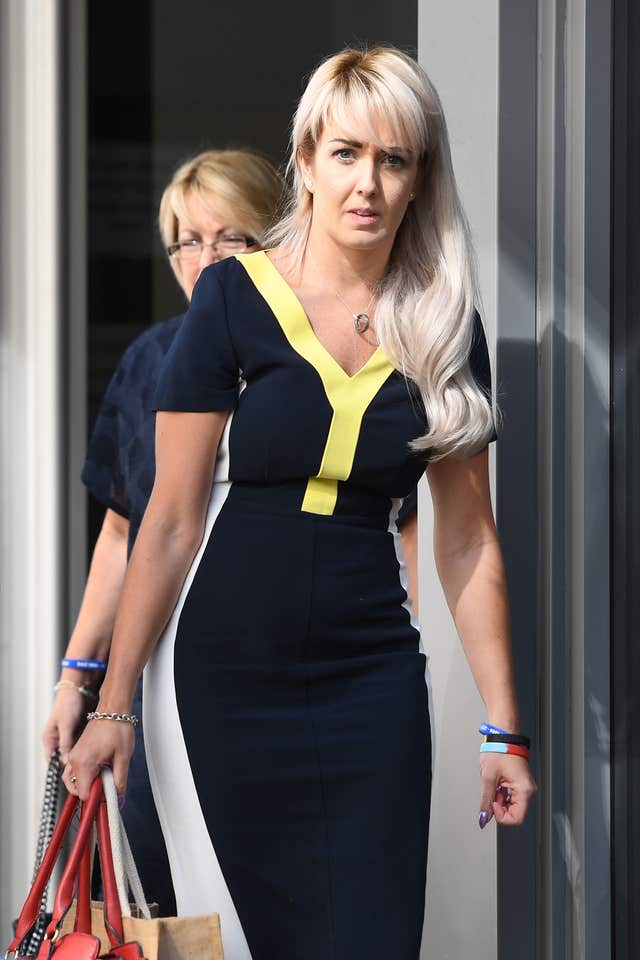No similar incidents with tank in nearly 20 years, soldiers’ inquest told
Matthew Hatfield and Darren Neilson died after an explosion in a Challenger 2 tank in Pembrokeshire.

An inquest into the deaths of two soldiers killed in an explosion has been told there had never been a similar incident involving the British Army’s main battle tank in nearly 20 years of service.
Corporal Matthew Hatfield and Corporal Darren Neilson, of the Royal Tank Regiment (RTR), died after an explosion in a Challenger 2 tank at Castlemartin firing ranges in Pembrokeshire, Wales, on June 14 2017.
Cpl Neilson, 31 and a father of one, from Preston, was the tank commander and was thrown from the vehicle in the blast, while Cpl Hatfield, 27, from Amesbury, Wiltshire, was loading ammunition.
Two other soldiers, Warrant Officer Stuart Lawson and Trooper Michael Warren, survived the blast.

A senior coroner also heard that the tank’s ammunition, known as “bag charges”, may have been “incorrectly stowed” outside boxes in the turret.
The two corporals, both highly trained gunnery instructors with combat experience, were only in the tank because they were taking another soldier out for a “guest shoot”.
An Army training officer, Sergeant Alexander Ahtom, told the coroner he “never thought it possible” the gun could be fired without the seal being in the barrel.
The Challenger 2 specialist also told the hearing he disagreed “completely” with a finding of the Ministry of Defence’s (MoD) joint service inquiry panel, which looked into the blast.
On Tuesday, the inquest heard there had been no similar incidents on this tank model since its introduction in 1998, despite thousands of rounds being fired, including during high-tempo combat operations action in Iraq.

On the first day of evidence on Monday, the coroner heard the bolt vent axial (BVA) seal had not been present when the gun was fired, allowing heated gases into the turret, where high-explosive charges were stored.
Simon Antrobus QC, for BAE – which built the tank – addressed Sgt Ahtom: “The tank has gone through, both before and after service, a whole series of rigorous development trials to look at reliability, firing and manoeuvres. During which thousands of rounds were fired.
“And then the tank has been in active service since 1998. It saw direct action in Iraq against Iraqi tanks, so it’s had to fire many rounds, under the stress of battle.
“And you, giving your evidence, you’re not aware of there being any prior incident where the gun has been fired or attempted to without BVA present?”
Sgt Ahtom replied: “I’m not aware of any former incident like this before.”
Asked if anybody had raised it “as a possibility or concern”, he replied: “Absolutely no-one has.”
Senior coroner Louise Hunt was told by Sgt Ahtom that there was no regulation to recheck the tank barrel – known as proving the gun – when one crew was handing the vehicle to another.
The dead soldiers’ tank had been used by a previous crew that morning, before Cpl Neilson and Cpl Hatfield took it to the firing area that afternoon.
Sgt Ahtom said that, in the previous six weeks, training drill procedures were changing to include a more frequent gun-proving drill – including checking for the BVA.
Ms Hunt said: “Were you concerned people might not be doing the prove-the-gun drill in the way you had anticipated?”
Sgt Ahtom replied: “Yes, I was concerned.”
He agreed that what Ms Hunt called a “misunderstanding” was possible, where a new tank crew took over a vehicle which already appeared set up to run.

Mr Antrobus said: “That’s the conclusion the service inquiry panel reached – but you disagree with that?”
Sgt Ahtom said: “Yes, I completely disagree with what’s written there.”
He confirmed the service inquiry panel had not spoken to him before delivering its findings.
The inquest, scheduled to last three weeks, continues.





